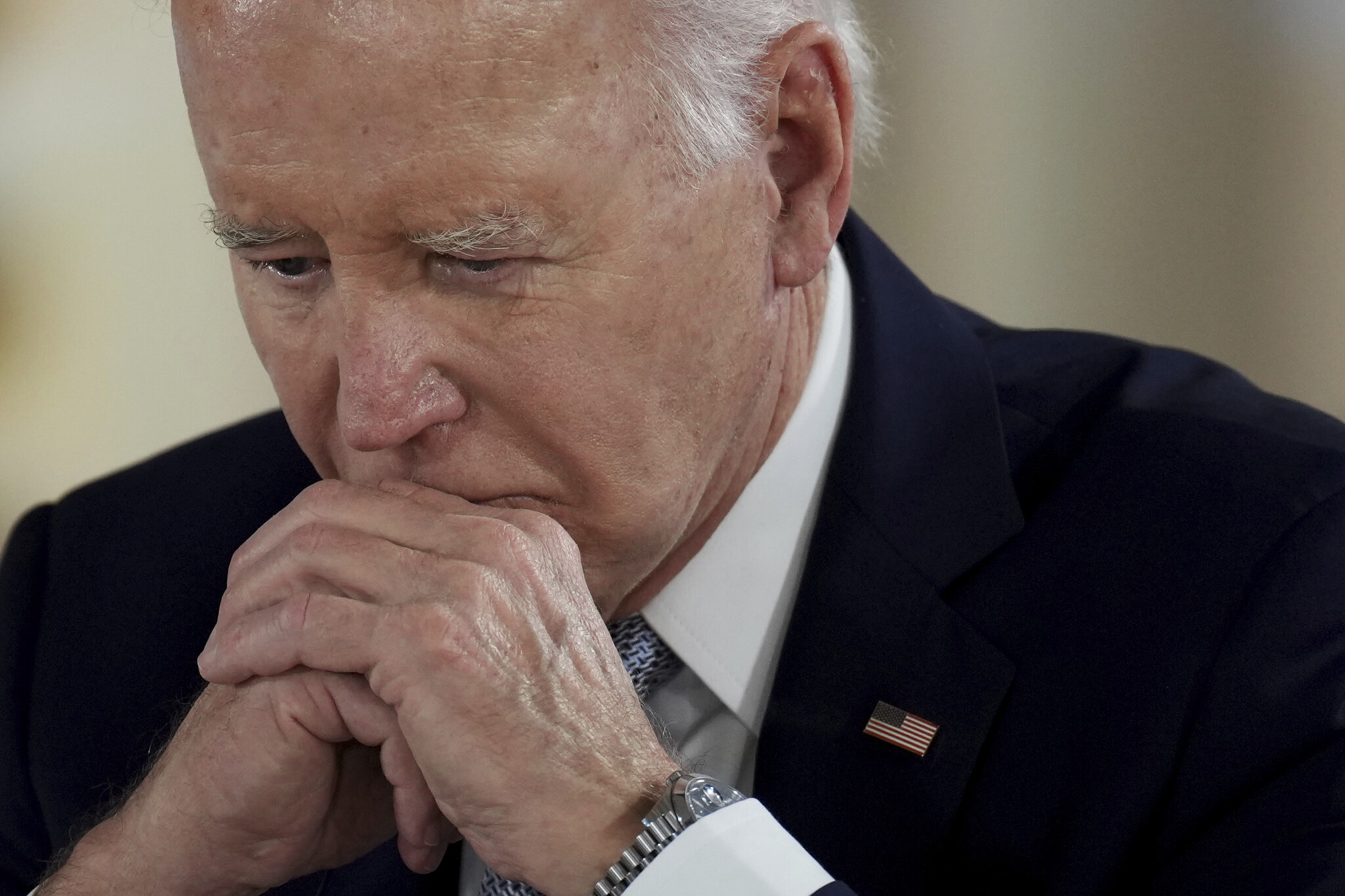Last night, CNN hosted the first debate of the 2024 U.S. Presidential election at its studios in Atlanta, Georgia. While the event featured theatrics, missteps, and mistruths from former president Trump, all eyes were on current President Joe Biden, who journalists, politicians, and citizens alike agreed came off as a startlingly feeble-looking and sounding leader of the free world. The President’s team said he was suffering from a cold.
JUST IN: 🇺🇸 President Joe Biden freezes during his debate against Donald Trump. pic.twitter.com/3ZpxPiv5Ua
— BRICS News (@BRICSinfo) June 28, 2024
Following an hour and a half of stumbling and fumbling, a CNN flash poll found that 67 percent of debate watchers believe Trump outperformed Biden. The President’s poor performance has sparked conversations across the country, with some calling on him to bow out and decline his likely Democratic Party nomination. These calls could have been expected from Republicans, but shockingly, many of them are now emanating from Democrat voters, politicians, and pundits.
Here are five tweets from those on the Left calling for President Biden to drop out of the presidential race.
Ian Bremmer shared a screenshot of the The New York Times website today displaying concerning headlines from writer Thomas L. Friedman, who is a friend of Biden’s, Frank Bruni, a long-time New York Times journalist, Patrick Healy, the paper’s deputy opinion editor, and Nicholas Kristof, a Pulitzer Prize-winning journalist and regular CNN contributor. Each writer either called for Biden to step down or expressed concern about his ability to lead America now and into the future.
the united states has never seen day after debate headlines like this pic.twitter.com/o7qIW3c4FX
— ian bremmer (@ianbremmer) June 28, 2024
John King, CNN’s chief national correspondent, said that minutes after the debate, “[A] deep, a wide and a very aggressive panic” spread through the Democratic Party. He also explained that there are now conversations happening among high-ranking Democrats that could result in them going to the White House and asking Biden to step down from the presidency to make room for a new nominee.
King said that Biden’s performance was received as “dismal” by prominent Democrats, some of whom are considering going public with their concerns.
“Oh my God, oh my God, oh my God…”
— Steve McGuire (@sfmcguire79) June 28, 2024
“What do we do about this?!”
“Very senior” Democrats reacting to Biden’s debate performance tonight, according to John King: pic.twitter.com/mjIGgc2EKB
Van Jones, a CNN analyst, political commentator, and former Obama advisor, said that even though he loves Joe Biden, worked for him, and thinks he is a good man and president, “he didn’t do well at all.” Jones said that Biden had a test to meet to “restore confidence of the country and of the base, and he failed to do that.”
He added that there is an option for a “different way forward” from Biden, if the president allows that to happen.
I love Joe Biden. But tonight's debate hurt. #DebateNight pic.twitter.com/IjS6YEptff
— Van Jones (@VanJones68) June 28, 2024
Andrew Yang, a former Democratic presidential candidate, contended that Biden is “a different guy in 2024” when compared to the Biden he debated in 2020.
Yang wrote on X, “Democrats who are afraid to broach the subject of Joe stepping aside are failing the country.” He also wrote that Joe Biden’s superpower is that he’s “a good guy who will do the right thing for the country” which In this case, is “stepping aside and letting the DNC choose another nominee.”
Look I debated Joe 7 times in 2020. He’s a different guy in 2024. #swapJoeout
— Andrew Yang🧢⬆️🇺🇸 (@AndrewYang) June 28, 2024
Edward Luce, an associate editor at the Financial Times, advocated for a new Democrat nominee to replace Biden after his performance against Trump. Luce said that “any number of potential Democratic nominees would be taking Trump down,” whereas Biden is letting him lie “through his teeth.” Luce also wrote on his X account that “If democracy is at stake (it is), Democrats need to act like they mean it. They have to be ruthless.”
This is a disaster. Democrats need to end their self-imposed censorship on Biden and fix this. There's two months until the convention. Other countries hold general elections in less time than that.
— Edward Luce (@EdwardGLuce) June 28, 2024
At a rally held today, President Biden told an large crowd, “When you get knocked down you get back up.”
Following the Democratic National Convention in August, the election will less than three months away.














